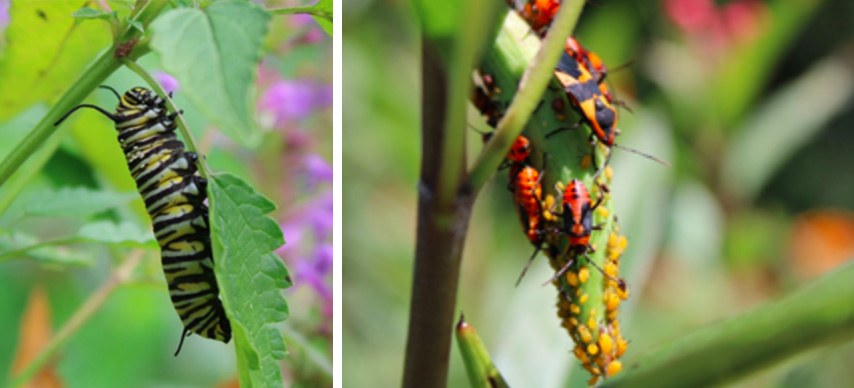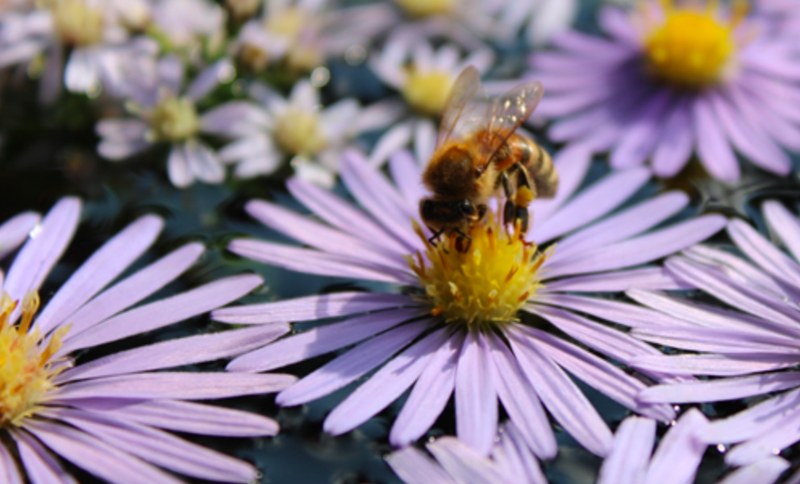Posted: October 5, 2020
As the days get shorter and temperatures begin to drop this fall, there is still plenty of insect and pollinator activity to be seen. This October, monarch caterpillars and milkweed bugs can be observed munching on milkweed plant tissues, honey bees are making honey from fall goldenrod blooms, and katydids continue to sing each night.

Left: Late-instar monarch caterpillar, photo credit: Juliet ‘Lana’ Meijas Right: Milkweed bugs (Oncopeltus fasciatus) and oleander aphids (Aphis nerii) on a milkweed plant, photo credit: Juliet ‘Lana’ Meijas
IBC Program Coordinator Natalie Boyle recently met up with the PA Master Naturalists this fall to provide instruction and training on insect and pollinator identification. This included a lecture and field activity, hosted by the PSU Shaver's Creek Environmental Center. The field activity focused on observing pollinator syndromes, which refers to the intimate evolutionary relationship shared by flowering plants and their pollinators. Over 300,000 flowering plant species worldwide are reliant on pollinator visitation to reproduce and, in many cases, to produce fruit. In exchange, these pollinators are rewarded with pollen and nectar that provide essential carbohydrate, fat and lipid resources to sustain themselves and to nourish their offspring. With so many diverse flowering species out there, some pollinators have learned to favor visiting select flowers over others to get the nutrition they need. These preferences are shaped by the unique morphological and sensory features exhibited by different flowers (such as color, smell, shape and size).
By conducting a series of quick, 10-minute observations of pollinator visits to blooming flowers on a sunny day, anyone can discover a flowering plants' attractiveness to different insect species. For example, last week, master naturalists were able to observe higher rates of fly visitation to small, white snakeroot blossoms, while bumble bees appeared to prefer visiting purple asters. These insect preferences correspond with what we know about pollinator syndromes, which can be explored in more detail at the United States Department of Agriculture website. If you would like to try this guided activity at your home or in your classroom, Dr. Boyle's instructions and materials can be found on the Center for Pollinator Research website under Resources and Outreach.

Pictured: A honey bee visits a fall-blooming purple aster, photo credit: Juliet 'Lana' Mejias
The Pennsylvania Master Naturalists program is a statewide partnership initiative that provides its members training in local ecosystems and the natural sciences and opportunities for conservation service work. Year-round educational programming and volunteer service opportunities can be explored by visiting their website.

